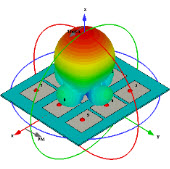屈臣氏的防盗标签是什么原理?
These tags are made of two strips, a strip of magnetostrictive, ferromagnetic amorphous metal and a strip of a magnetically semi-hard metallic strip, which is used as a biasing magnet (to increase signal strength) and to allow deactivation. These strips are not bound together but free to oscillate mechanically.
Amorphous metals are used in such systems due to their good magnetoelastic coupling, which implies that they can efficiently convert magnetic energy to mechanical vibrations.
The detectors for such tags emit periodic tonal bursts at about 58 kHz, the same as the resonance frequency of the amorphous strips. This causes the strip to vibrate longitudinally by magnetostriction, and to continue to oscillate after the burst is over. The vibration causes a change in magnetization in the amorphous strip, which induces an AC voltage in the receiver antenna. If this signal meets the required parameters (correct frequency, repetition etc.) the alarm is activated.
When the semi-hard magnet is magnetized, the tag is activated. The magnetized strip makes the amorphous strip respond much more strongly to the detectors, because the DC magnetic field given off by the strip offsets the magnetic anisotropy within the amorphous metal. The tag can also be deactivated by demagnetizing the strip, making the response small enough to that it will not be detected by the detectors.
Ref: http://en.wikipedia.org/wiki/Electronic_article_surveillance
不错,才了解。
原理是不错,就是好些个力学的词,看着小费劲。
相关文章:
- 有关RFID标签 现在成本中国可以控制到多少了?(05-08)
- 谁见过RFID标签打印机?(05-08)
- 有谁知道无源的电子标签的工作电压是多少?(05-08)
- 射频标签技术 可以怎么分(05-08)
- 请问:RFID是如何实现同时读多标签的,怎么读的?谢谢!(05-08)
- 小活:设计射频标签天线!(急)(05-08)











